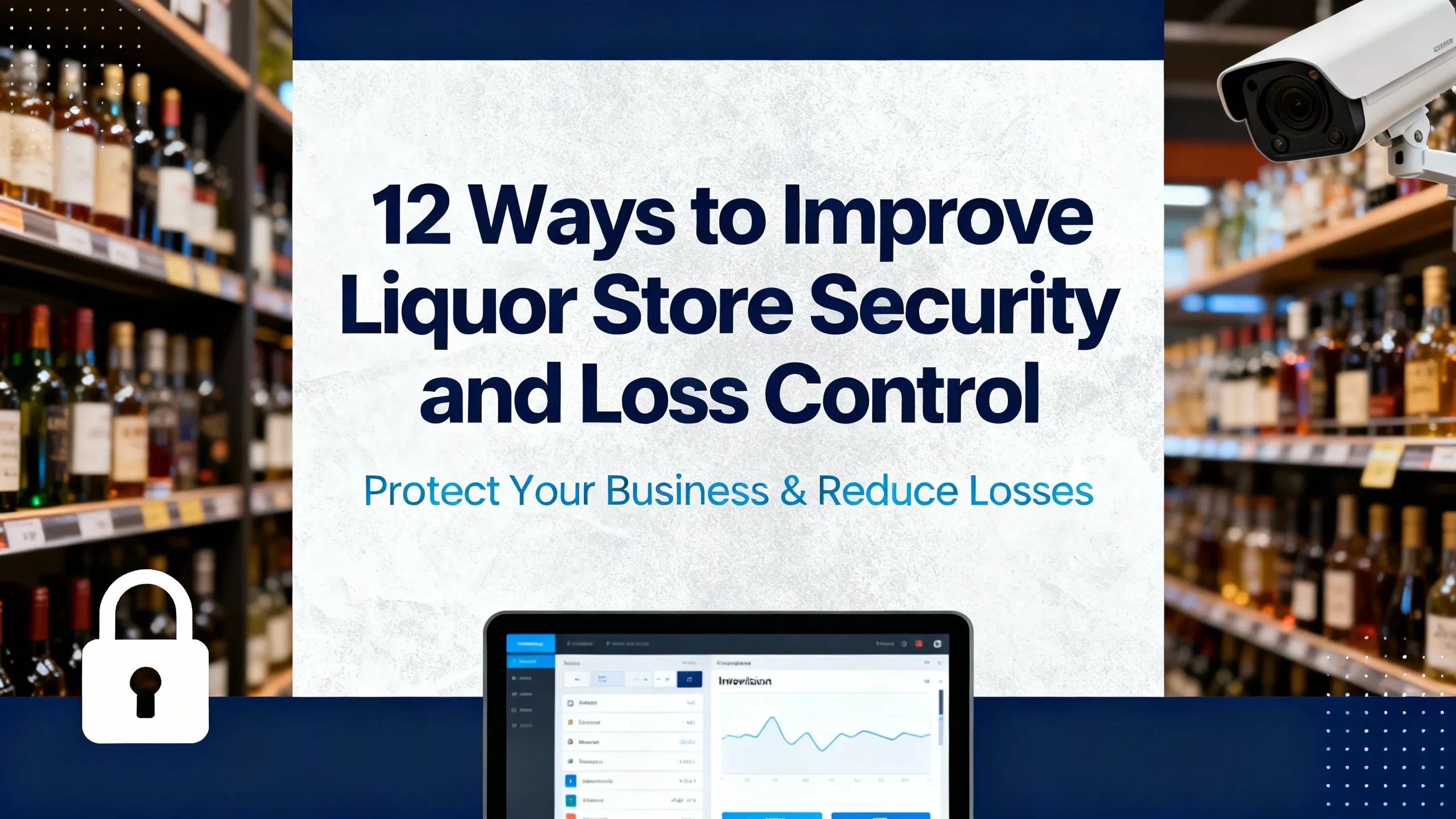12 Ways to Improve Liquor Store Security and Loss Control

Limiting losses at the liquor store, while keeping both staff and patrons safe, is vital to the liquor store's profits. Store owners need to have safety measures in place, considering the risk of theft and other security threats. Implementing comprehensive security measures is no longer optional but essential for sustainable business operations.
In this post, we will discuss twelve methods that liquor establishments may use to enhance security and minimize losses. Effective liquor store theft prevention strategies combine technology, training, and smart operational practices to protect valuable inventory and create a safer environment for everyone. Let's explore these practical solutions that can transform your store's security posture.
1. Install Surveillance Cameras
Surveillance cameras are both security system deterrents and monitoring tools. Cameras placed systematically around the store can provide coverage of all areas. Newer security techniques have better cameras that can record clearly in the dark and in low-light conditions. Checking the footage regularly helps you notice any suspicious activity to prevent theft from happening.
2. Implement Access Control Systems
Access control systems restrict access to areas containing sensitive materials, such as stockrooms and offices. Key cards or biometric systems restrict access only to those who are granted permission. It minimizes unauthorized access to restricted areas and decreases internal theft.
3. Train Employees on Security Protocols
Proper training of staff members is critical to good security. Workers should be trained to spot red flags and know store regulations. Frequent workshops and refresher courses keep everyone informed of the best practices and of new security procedures.
4. Use Security Mirrors
Well-positioned security mirrors help eliminate blind spots. It allows the staff to keep an eye on the customers from a distance and to see if anyone is attempting to steal. They make a great low-cost addition to expand store monitoring.
5. Monitor Inventory Closely
Periodic inventory counts also identify disparities and possible losses. This is where inventory management software comes into play, making it easier to track stock levels accurately. Dealing with discrepancies from the first phase will stop any future problems.
6. Employ Security Personnel
You can hire security personnel who will patrol the premises; this will create a physical presence that will intimidate thieves. It enables security personnel to observe the behavior of customers, regulate crowds during rush hours, and respond to events in real time. According to the National Association for Shoplifting Prevention, visible security measures significantly reduce theft attempts in retail environments. Just their presence reduces the theft attempts a lot.
7. Enhance Store Lighting
Proper lighting is essential for security. Research shows that well-lit stores prevent criminal acts by eliminating places to hide from view. Make sure to have enough lighting both inside and out, paying particular attention to entryways and parking areas.
8. Secure Entry and Exit Points
The better and stronger the doors and windows are, the more reinforced by locks and break-proof glass they are, and the more secure. If someone enters or exits a controlled area, staff must be notified so they can take action, which can be done by installing alarms at every entry and exit point. Periodic inspections ensure the systems operate appropriately.
9. Display Clear Signage
Customer notices that indicate surveillance and theft prevention will act as deterrents. Signs should be visible and placed at the entrance points and along the store. They remind us that no crime will go unfilmed.
10. Limit High-Value Item Accessibility
By putting expensive items in secure, visible areas, the risk of theft goes down. Always keep these products locked away in cabinets or behind the counter, where they cannot be accessed easily. Staff should support those who wish to purchase them and ensure their safety.
11. Use Anti-Theft Devices
Anti-shoplifting devices include tags, alarms, or other ways to protect merchandise from thieves. These devices are almost always placed on the merchandise and will set off an alarm if someone tries to leave without being properly deactivated. They are great at reducing loss.
12. Conduct Regular Security Audits
Conducting regular security audits will expose vulnerabilities in existing systems. Consulting with security experts to review and revise procedures keeps them functional. A secure environment requires ongoing assessment and improvement.
Conclusion
These techniques and methods can be employed to make a liquor store much more secure against losses. The safety of a business can only be guaranteed if the owners adopt a combination of physical measures and staff training to create a comprehensive approach of making the shopping experience safer for the customers and the business more secure. Liquor stores can safeguard their assets and create a safe community by bringing emphasis to these actionable steps.
\
